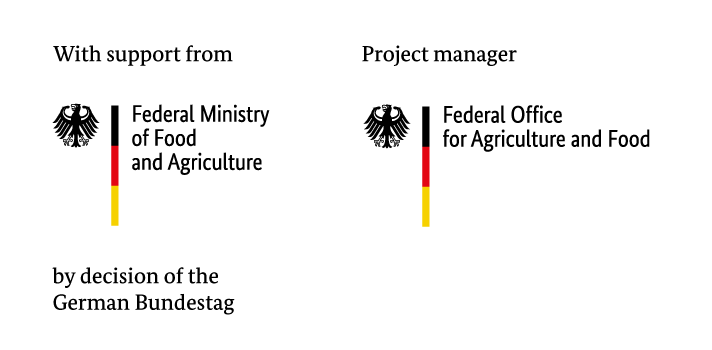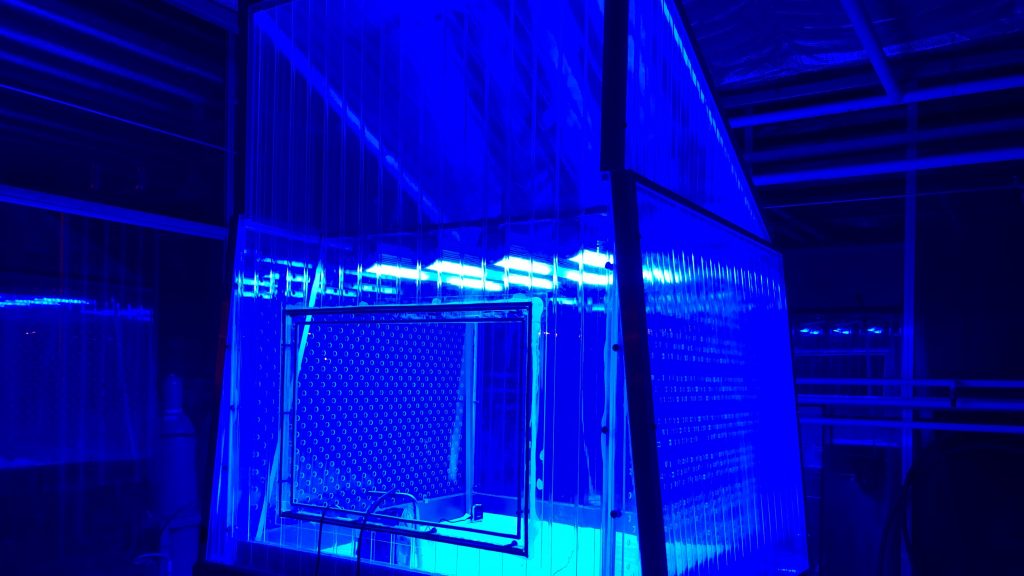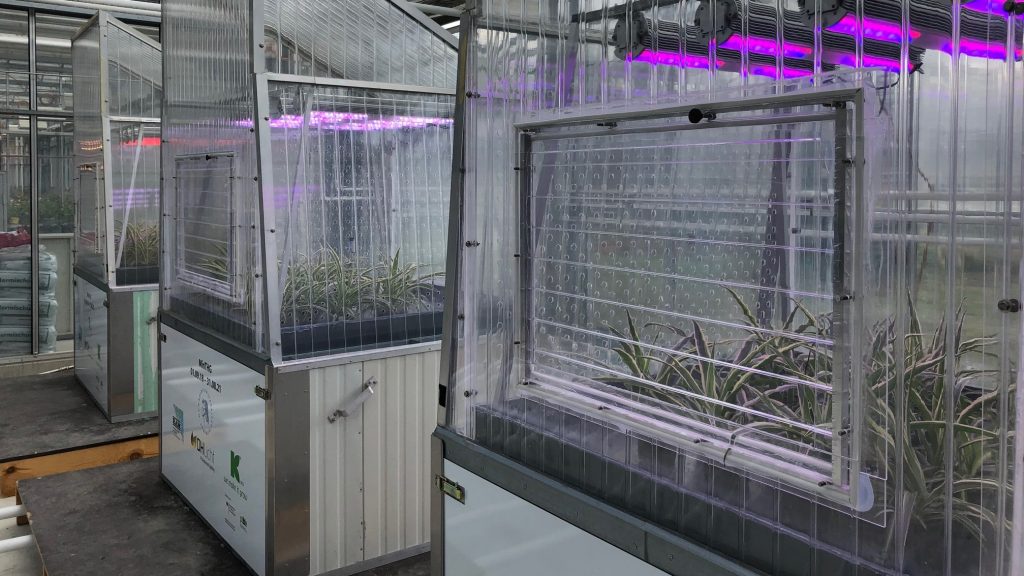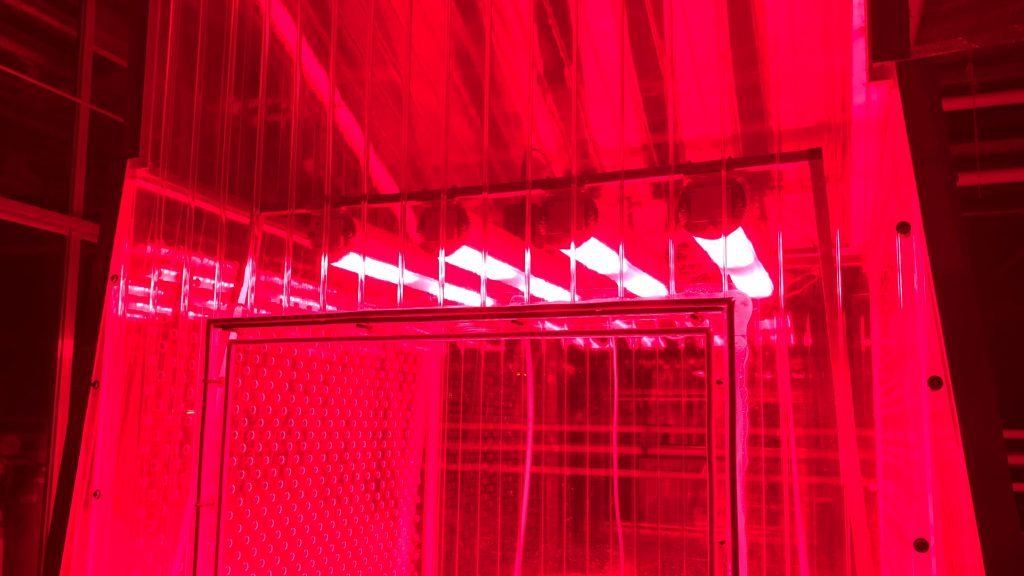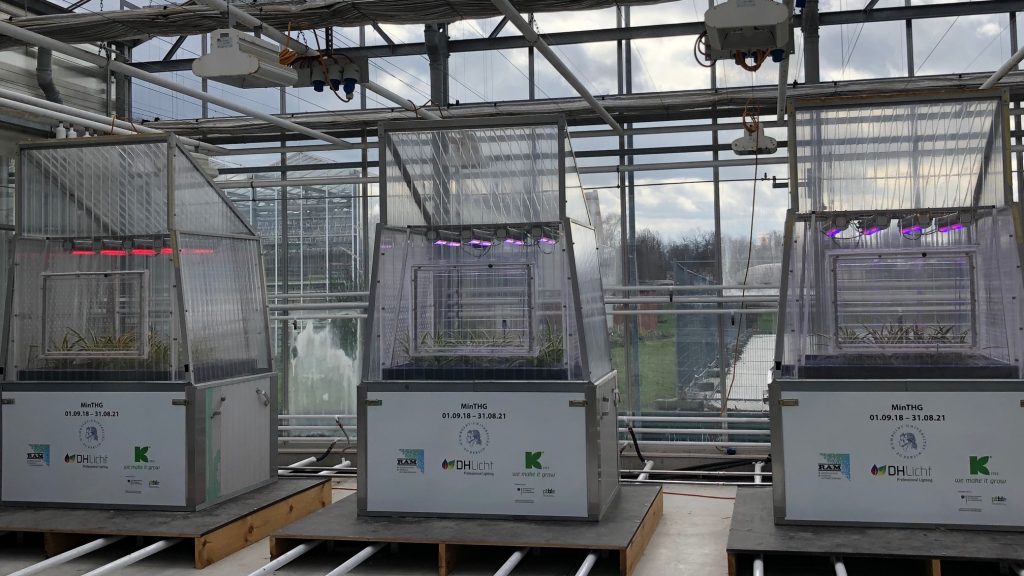MinTHG
Technical procedures for closed crop production
systems to reduce greenhouse gas emissions and climate changeinduced abiotic stress
MinTHG
One of the major challenges of the 21st century is to reduce the consequences of climate change caused by greenhouse gas (GHG) emissions. The agricultural sector is a notable source of GHG emission including the protected cultivation using CO2 fertilization. Therefore, the MinTHG consortium, consisting of several companies (RAM, DH Licht, Klasmann-Deilmann) and the Humboldt-University Berlin, researches and develops innovative technologies and processes for the substantial reduction of GHG emissions in greenhouse cultivation. For example, cooling / dehumidifying by water curtains (<dew point) in the greenhouse is being studied to adapt the greenhouses to global warming by avoiding plant stress and storing thermal solar energy. In such semi-closed greenhouses CO2 and water (or water vapor) can be saved, which otherwise escape through the roof ventilation. This is accompanied by considerable potential for saving fertilizer and reducing GHG emissions through fertilizer production. In addition, the use of energy screens, controlled in accordance with photosynthesis, reduces the heat consumption (or fuel consumption) of greenhouses. Rockwool substitute substrates should make another contribution to reduce GHG emissions. For this purpose, organic substrates for hydroponic intensive cultivation are tested. As expected, new technologies and processes can influence the growth conditions of plants. For this purpose, the effects of the interactions of various climate parameters (such as temperature, humidity, CO2, light) are investigated in phytotrons and are evaluated on the basis of continuous biological measurement of photosynthesis and transpiration rate. In addition, phytochemical analyzes of quality-giving ingredients are carried out. These investigations serve to optimize the microclimatic conditions in the greenhouse through improved climate and process management. In the research project, water-cooled LEDs (LED-LE) are used in the phytotrons. In addition to the light intensity, the spectral light quality also has an influence on the plant morphology and secondary metabolites. With the LED-LE, four different light colours (blue, red, dark red and white) can be individually regulated. The active water cooling has the advantage that the heat of the LEDs is transferred outside the phytotrons to ensure a long life time of the LED chips. In addition, it is possible to generate very high light intensities in order to carry out light stress experiments.
The project “MinTHG” is funded by the Federal Ministry of Food and Agriculture (BMEL) from 2018 to 2021 as a contribution to climate protection under the Paris Agreement (COP 21). The project is initialized by the Federal Office of Agriculture and Food (BLE) as part of the program to promote innovation.
—
Project partners:
Humboldt-Universität zu Berlin
DH Licht GmbH
Klasmann-Deilmann GmbH
RAM GmbH Mess- und Regeltechnik
—-
More at:
